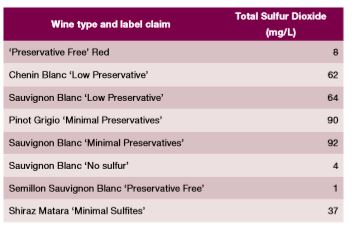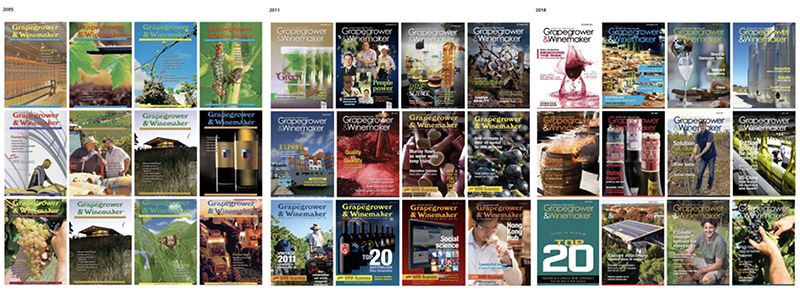Although a wine might have ‘low preservative’ on its label, does that actually mean that it is? Greg Howell from Vintessential Laboratories recently had cause to investigate and asks whether it’s time for a definition of the term to be established to qualify to use it on a label.
Introduction
As part of a recent project to develop a new test kit for the determination of sulfur dioxide for use with spectrophotometers and discrete analysers, we tested a batch of commercially purchased wines labelled ‘low preservative’ so we could be sure that the test kits worked across the full range of sulfur dioxide levels. To our surprise, a number of these wines were not low at all! This is of concern to our industry as some consumers are very interested in and aware of the preservative levels of the foods and drinks they purchase. Is it time for the wine industry to decide what the level of sulfur dioxide should be to qualify for a ‘low preservative’ statement?
Sulfur dioxide
Sulfur dioxide (synonymous with sulfites) is widely used in the preservation of wine quality and so is an important ingredient in the production of wine. The maximum level of sulfur dioxide in wine is regulated in all wine-consuming countries due to its health impact at higher doses. In Australia the maximum level allowed in dry wines is 250mg/L (ppm). For wines containing more than 35g/L of sugars, the total sulfur dioxide content can be up to 300 mg/L.
Although the above levels are deemed safe, some individuals are allergic to the sulfites in various foods at much lower levels and so warning labels are required in most countries for food containing minimal levels of sulfites. In Australia the level in wine that requires an allergen warning under the Foods Standards code is for “added sulphites (such as SO2 or PMS) in concentrations of 10mg/kg or more”. That is, any wines that have added sulfites (in whatever form it is added, e.g. PMS) of 10ppm or more are required to have an allergens warning.
To complicate matters, it is well known that sulfur dioxide is produced during the fermentation process and can be well above the 10mg/L minimum mentioned above. So not only can the sulfur dioxide come from additions, it can be present in wine simply from the fermentation process. These amounts are cumulative so finished wines should definitely be tested prior to making a claim of ‘low preservative’.
Measuring sulfur dioxide
The measurement of sulfur dioxide has been done for decades by the quite cumbersome and elaborate aspiration/oxidation technique, commonly referred to as the Rankine method in Australia and New Zealand. This is widely performed in wineries and wine laboratories (ours included) throughout Australia and New Zealand, even though it is an old and laborious way of getting this data. Many other tests have been updated to more modern and efficient techniques; the use of Near Infra-Red (NIR) spectrometers to measure alcohol content in place of the time-consuming distillation/hydrometry or pycnometry is one good example.
There are other ways of measuring sulfur dioxide and as a productivity improvement for our labs we started to investigate other techniques some time ago. As we also make and sell test kits for use with spectrophotometers and discrete analysers, we were very interested to find out if there was a reliable kit on the market.
We didn’t find any kits that we considered safe to use (many contain the carcinogen formaldehyde) or that gave accurate results for all levels and wine styles. Red wine in particular is problematic for the colorimetric type of analysis, with some manufacturers basically ignoring this issue by advising to simply decolourise the wine — this does not provide accurate results.
Test kit development
After much work we have developed and now produce very well-performing test kits for free sulfur dioxide for use in spectrophotometers and discrete analysers and we are about to launch a similar test kit for total sulfur dioxide.
As part of our development work we wanted to be sure our kits covered the full range of sulfur dioxide levels found in wine, not just the levels in standard solutions. So we tested hundreds of wines that came through our labs to validate the new technique by comparing the results from the Rankine technique to our colorimetric procedure. One problem we had was testing wines with low levels of sulfur dioxide as out of the hundreds of wines, very few had very low levels — that is, below approximately 30mg/L.
Low preservative wines
So we headed to the nearest Dan Murphy’s store and went to the ‘low preservative’ section and bought some commercial wines that were labelled as being low in preservatives. To our surprise some of the so-called ‘low/minimal preservative’ wines were nothing of the sort. We got results close to 100ppm which is actually typical or even high for the average of what we had tested elsewhere! Our results for a small batch of low preservative Australian wines from Dan Murphy’s aisle is listed in Table 1.

Table 1
So, how low is ‘low preservative’?
According to Steve Guy, the well-known compliance cop at Wine Australia, there is no definition for low preservative statements on wine labels. He did state, however, that, “Sulfite free means it is below the LOQ”. For non-lab-type readers, LOQ is the acronym for Limit of Quantification and is the lowest level that the test you do in your winery can accurately report.
To give an example, the LOQ for free sulfur dioxide using our new test kit is 1mg/L. That means that none of the wines we tested in Table 1 would be able to claim sulfite free if the wine was tested using this kit!
Steve Guy did also state that the ACCC rules apply and that “the principle of not to mislead always applies”. Judging by some of the results in Table 1 we wonder if that is the case for some these wines?
Conclusion
A number of wines we tested from the bottle shop shelf that claimed to be low/minimal preservatives were not low at all when compared to the average that we saw for the hundreds of wines in our labs as part of this project. This raises the issue of whether the wine industry should agree upon what “low preservatives/minimal preservatives” actually means and what the correct wording (no sulfur/minimal sulfites/low preservative) should be? Are label claims on some wines currently misleading consumers?
Vintessential Laboratories is dedicated to helping its customers discover production problems early, understand them, and then fix them. At its laboratories around Australia the company tests hundreds of samples every week, so there’s hardly a problem it hasn’t seen. Vintessential is happy to share some of the recent problems that have been sent to the company and explain how, working with its clients, it managed to help solve them. Greg Howell founded Vintessential Laboratories in 1995; he can be contacted by email: [email protected].
This article was originally published in the August issue of Grapegrower & Winemaker magazine. Subscribe here.
When you subscribe, you get:
Your choice of print copy subscription or digital-only subscription!
Both types of subscription include:
Digital access to all Grapegrower & Winemaker issues since 2005
Access to download PDF versions of full magazines and single articles
Subscribe today
To preview the latest magazine, click here.
To subscribe, click here.






















